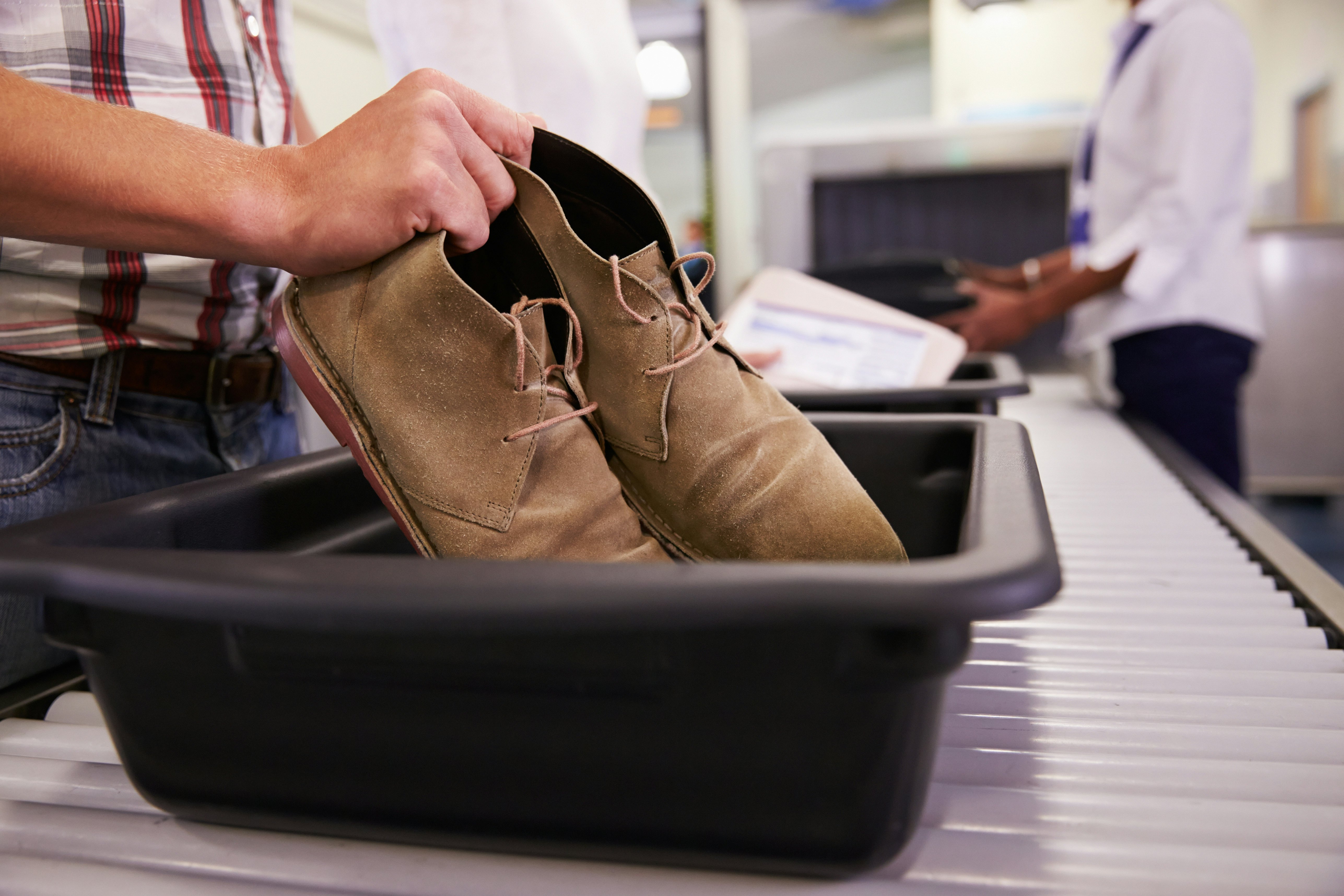

Woman standing in front of a flight departure board at an airport. PeopleImages/Shutterstock
Since I’m at the airport about four times a month, I don’t have much patience for waiting in long lines for the privilege of taking off my shoes at the security check. These are good problems to have, I know. But anyone who goes to the airport often knows that the rigamarole around security can be one of the worst parts of any travel day.
Lucky for us frequent travelers, there are two well-known programs that will get you through airport security faster. Since each one has different application processes, costs and benefits, it can be hard to know which is better for you. If you’re on the road a lot, read on to learn whether TSA PreCheck or Global Entry is right for you.

TSA PreCheck
Best for travelers who want expedited security screenings at most US airports
According to the Transportation Security Administration (TSA), 99% of TSA PreCheck passengers wait less than 10 minutes to pass through airport security. This is because, at more than 200 US airports, approved passengers can access a designated security lane with fewer security requirements. PreCheck travelers are able to keep their shoes, belts and light jackets on as they pass through scanners, and they can leave laptops and liquids in their carry-on bags that pass through X-ray scanners. No more awkward sock time at airport security!
How to apply for TSA PreCheck
You can start your application process for TSA PreCheck online or in-person at any of hundreds of enrollment locations. You’ll have to visit an enrollment location in person to complete the process.
Find an enrollment provider near you on the TSA website. The price for PreCheck varies by provider, from $76 up to $85.
Complete an online application on the TSA website, indicating the enrollment provider of your choice. The online part of the application should take no more than 10 minutes.
Make an appointment at the physical location of your enrollment provider. On the day of the appointment, you’ll show necessary identification documents for verification, and have your photo taken and fingerprints scanned.
Once you get approved – usually within five days – you’ll receive a Known Traveler Number (KTN), which you can add to airline reservations. The KTN is valid for five years.

Global Entry
Best for travelers who expedited immigration and customs upon arrival, plus TSA PreCheck benefits
Global Entry is a US Customs and Border Protection (CBP) program that streamlines the entry process for travelers arriving in the United States from abroad. When they arrive on an international flight at a US airport, Global Entry members can skip the longer passport lines at immigration and use automated kiosks. These use facial recognition for a touch-less, expedited process.
Global Entry members are automatically enrolled in TSA PreCheck, bringing all the security benefits of PreCheck at the beginning of a trip as well. (An extra bonus? Celebrities use Global Entry, too. I once was in line for the kiosk behind Orlando Bloom.)
How to apply for Global Entry
Applying for Global Entry is more complicated than for PreCheck. The entire process can take anywhere from a few weeks to a year, depending on your personal history and interview availability.
Make sure you are eligible for Global Entry using the Customs and Border Protection website. Basic requirements include being a citizen of an eligible country, being over the age of 18 and having a clean criminal record.
Create a Trusted Traveler Program (TTP) account.
Complete the online part of the application and pay the $120 nonrefundable application fee. About 80% of applicants will receive conditional approval within two weeks, allowing them to move onto the next step. (If you aren’t conditionally approved, your application will be manually reviewed, usually due to incomplete information or any criminal record.)
Once you’re conditionally approved, you can schedule an interview at a Global Entry Enrollment Center, many of which are at major airports. These are in high demand, so you should count on the earliest availability being weeks from the date of booking.
Bring your identification to your interview and complete the application process in person, which will include fingerprinting and the taking an identification photo.
When you’re approved, you’ll receive your Known Traveler Number (KTN), which you can enter when booking any domestic and international flight reservations.
Planning tip: If you prefer not to go to the airport just for your interview, look into Enrollment on Arrival. This eliminates the need to make a trip to the airport just for the interview, allowing you to take care of your interview right after you land in an international terminal.

TSA PreCheck vs Global Entry: the breakdown
TSA PreCheck
Fee: $76.75–$85 (ranges based on enrollment provider)
Duration: five years
Expedited security screening: Yes
Expedited customs and border control check: No
Requires a background check: Yes
Requires fingerprinting: Yes
Requires an interview: Yes
Requires a valid passport: No
Global Entry
Fee: $120
Duration: five years
Expedited security screening: Yes
Expedited customs and border control check: Yes
Requires a background check: Yes
Requires fingerprinting: Yes
Requires an interview: Yes
Requires a valid passport: Yes

You should apply for TSA PreCheck if…
If you don’t have an international trip planned in the next year, we recommend sticking to TSA PreCheck. PreCheck costs about a third less than Global Entry, and if you’re traveling sooner rather than later, it’s probably the better option, as the application process is far quicker than Global Entry’s and the enrollment centers more numerous and accessible. Also, you don’t need a passport for TSA PreCheck.
Planning tip: If you’re torn between PreCheck and Global Entry, keep in mind that you would still need to go through the full, long application process for the latter. Remember that Global Entry includes all the benefits of PreCheck.
You should apply for Global Entry if…
If you are someone who travels internationally multiple times a year, Global Entry is a lifesaver. Enrollment will save literally hours of line-waiting time at busy international airports Plus, you’ll get all of the TSA PreCheck benefits on your domestic flights.
If you have a credit card that covers the application cost of Global Entry and you aren’t in a rush, you’re better off signing up for Global Entry rather than TSA PreCheck.
Also, if you are not a US citizen or green card holder but you are a citizen of an eligible country, you can apply for Global Entry (which comes with TSA PreCheck) – but not TSA PreCheck itself. This makes Global Entry an appealing choice for non-US citizens who travel frequently to and within the USA.














